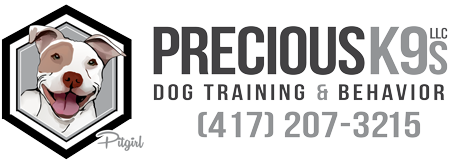Unfortunately a large number of our four-legged friends are terrified of things in everyday life. How are we supposed to help them? First, you have to notice the dog is having a hard time. Then you have to determine whether it is a fear or a phobia. A fear is when a dog startles and worries about the stimuli, and a phobia is when a dog shuts down and worries to the point of exhaustion. Some dogs with a phobia will do anything find way out of the situation, causing them to get loose or run out into traffic and get hurt or worse; some dogs will bite; other dogs will check out. When checking out happens they can either be in a panic or standing completely still and look like they are fainting. Dogs can also have dilated eyes, dry panting, and many other symptoms. .No matter what symptoms your dog has, you have to find things that can help them cope.
One thing that is highly recommended is Dog Appeasing Pheromones (DAP). This comes in the form of a collar, spray, or diffuser. The pheromone is a synthetic version of the pheromone a mama dog would put off in her milk to relax her puppies. It’s works just like we would use aromatherapy in our homes to relax ourselves.
Another thing to try is the Thundershirt. It works just the same as swaddling a baby. When you put it on the dog it makes them feel secure and in turn can relax them. I have had a lot of luck using this shirt with phobias. Every dog is different, so it will depend on how severe the phobia is as to what the results will be. Dogs with extreme reactions may only slow down movement or trembling. Although, dogs with less severe reactions may stop shaking or come out from under the bed. Dogs with minimal reactions to the stimulus may just go about life normally. I have found that the shirt doesn’t always work the first time. Sometimes they have to wear it 4 or 5 times to start relaxing when it goes on.
Of course, to help the dog with any fear or phobia, it would be most beneficial to add training into the mix. This can teach the dog how to handle a scary situation, in turn making it less scary.
I do want to say that sometimes we have to recommend you go to your vet to get started on medication because the symptoms are so severe. (We always recommend you try the non-medicinal things before you make that vet trip). After getting the dog on the right medication you want to add the training in. Our company works with the local Veterinarians; they prescribe the medications, we help the owner with the training. The medication just takes the edge off so we can start conditioning the dog to handle the anxiety in a different way. Many times the dog only has to take the meds temporarily.
In closing, when severely stressed, dogs can do amazing things. Make sure your dogs have collars with tags in case they bolt. A microchip will help get your dog home if the tag falls off. Good luck with your four-legged babies and call Side Kick Dog Training for further information about your dogs fear or phobia, so we can get you started in the right direction.
